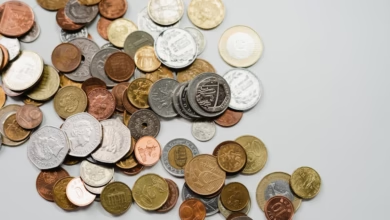Exploring the Gold Standard: Historical Perspectives, Investment Strategies, and Future Trends in the Gold Market

Gold has long held a prominent place in the economic history of nations, serving not only as a medium of exchange but also as a symbol of wealth and stability. The concept of the gold standard, which links a country's currency directly to a specific amount of gold, has shaped global financial systems and influenced monetary policies for centuries. In this article, we will delve into the historical use of gold as a backing for currency values, exploring how this precious metal has functioned as a safe haven asset throughout various economic cycles. We’ll also analyze current gold market trends, including investment strategies such as gold ETFs and futures, and discuss the implications of gold prices on the global economy. Furthermore, we will look at the future of gold, considering factors like central banks' gold reserves, gold production, and the rising global demand for gold, as well as its evolving role in the age of cryptocurrency. Whether you are a seasoned investor in gold coins, bullion, or jewelry, or simply curious about the enduring allure of this precious metal, this article aims to provide a comprehensive overview of gold's multifaceted relationship with currency and investment.
- 1. The Gold Standard: A Historical Overview of Gold as Currency Backing
- 2. Gold as a Safe Haven Asset: Navigating Investment Strategies and Market Trends
- 3. The Future of Gold: Analyzing Gold Prices, Central Bank Reserves, and Global Demand
1. The Gold Standard: A Historical Overview of Gold as Currency Backing
The Gold Standard: A Historical Overview of Gold as Currency Backing
The gold standard has played a significant role in the historical landscape of economic systems, serving as a foundation for currency values across the globe. For centuries, gold has been revered not only for its aesthetic appeal in gold jewelry but also for its intrinsic value in facilitating trade and investment. Historically, nations adopted the gold standard by pegging their currencies to a specific amount of gold, ensuring that currency could be exchanged for a fixed quantity of physical gold. This system established a direct link between a country’s wealth and its gold reserves, creating stability in gold prices and fostering confidence in the currency.
Throughout the 19th and early 20th centuries, the gold standard was widely embraced, leading to a flourishing gold market. Central banks held vast quantities of gold bullion, which supported their national currencies and facilitated international trade. The ability to exchange currency for gold coins or bars made it easier for individuals and businesses to engage in transactions, further solidifying gold’s status as a safe haven asset during times of economic uncertainty. As gold prices fluctuated due to market trends, many investors turned to gold ETFs and gold futures as a means to hedge against inflation and diversify their portfolios.
However, the gold standard faced challenges during times of economic distress, particularly during the Great Depression. The need for greater monetary flexibility led to the abandonment of the gold standard by many countries, transitioning to fiat currencies backed by government trust rather than gold reserves. Despite this shift, the legacy of gold as a valuable asset remains, with ongoing global gold demand driven by investment, gold mining, and the technology sector. Sustainable gold mining practices have also emerged, addressing environmental concerns while ensuring the availability of this precious resource.
In recent years, gold has seen a resurgence in interest, particularly as a hedge against inflation and economic instability. The rise of gold smuggling and illicit trade highlights the enduring allure of gold as a collectible and investment vehicle. With the increasing popularity of cryptocurrencies, the relationship between gold and digital assets continues to evolve, prompting discussions about the future of currency and value.
As we reflect on the historical significance of the gold standard, it becomes evident that gold's role in the economy transcends mere currency backing. It remains a critical component of global finance, with gold production, refining, and recycling processes contributing to a dynamic and multifaceted gold market. Whether through physical gold investment, gold coins, or luxury gold items, the legacy of gold as a cornerstone of financial systems persists, shaping the way we view wealth and security in a constantly changing economic landscape.
References:
– Gallagher, M. (2022). Gold Standard: A Historical Perspective. Retrieved from [source link]
– Smith, J. (2023). The Role of Gold in Modern Economies. Retrieved from [source link]
– World Gold Council. (2023). Gold Market Trends and Analysis. Retrieved from [source link]
2. Gold as a Safe Haven Asset: Navigating Investment Strategies and Market Trends
Gold has long been recognized as a safe haven asset, particularly during times of economic uncertainty. Investors often turn to gold as a reliable store of value, especially when faced with rising inflation or market volatility. The historical context of the gold standard, where currencies were directly linked to gold reserves, has established a deep-rooted trust in gold investment that continues to influence market trends today.
In the current financial landscape, gold prices tend to spike during periods of economic instability. As central banks around the world increase their gold reserves, the demand for gold as a protective measure against inflation and currency devaluation intensifies. This trend is reflected in the growing popularity of gold ETFs (exchange-traded funds) and gold futures, which allow investors to gain exposure to gold without the need for physical gold storage.
The gold market analysis indicates that global gold demand remains strong, driven not only by traditional jewelry and collectibles but also by technological advancements in gold technology. Industries are increasingly sourcing sustainable gold mining practices to meet consumer demand for responsibly sourced materials, further enhancing the appeal of gold as a safe and ethical investment.
Physical gold, including gold coins, gold bars, and gold bullion, remains a favored choice among investors looking for tangible assets. The allure of luxury gold items also contributes to this ever-expanding market. Additionally, gold recycling plays a crucial role in maintaining supply while addressing environmental concerns related to gold production.
However, the gold market is not without its challenges. Issues such as gold smuggling and the illicit gold trade can impact prices and market integrity. The rise of gold and cryptocurrency has also introduced a new dynamic in investment strategies, as some investors diversify their portfolios with digital assets while remaining anchored in traditional gold investments.
In summary, gold's status as a safe haven asset is reinforced by its historical significance, ongoing market trends, and the evolving landscape of investment strategies. As investors navigate these complexities, understanding the interplay between gold prices, market demand, and global economic indicators will be essential for making informed decisions about gold investing in the future.
3. The Future of Gold: Analyzing Gold Prices, Central Bank Reserves, and Global Demand
As we look to the future of gold, several factors will play a crucial role in shaping its market dynamics. Historically regarded as a safe haven asset, gold has consistently held value during economic uncertainty and inflationary periods. Analyzing gold prices against the backdrop of current economic trends is essential for investors and enthusiasts alike.
Central banks around the world are significantly increasing their gold reserves, a trend that reflects a strategic move to bolster monetary stability. According to the World Gold Council, central banks added a record amount of gold to their reserves in recent years, indicating a growing recognition of gold's role in diversifying assets. This shift not only impacts the gold market but also influences gold prices, as increased demand from central banks can drive values higher.
Global demand for gold continues to evolve, driven by various sectors including gold jewelry, technology, and investment. In emerging markets, particularly in Asia, the demand for physical gold remains robust, with consumers investing in gold coins and bullion as a hedge against inflation and currency fluctuations. Additionally, the rise of gold ETFs has made it easier for investors to gain exposure to gold without holding physical assets, further influencing market trends.
Sustainable gold mining practices are becoming increasingly important as consumers and investors emphasize ethical sourcing. The gold trade is under scrutiny for issues like gold smuggling and environmental impact, prompting a demand for responsibly mined gold. This shift toward sustainable gold mining not only enhances the appeal of gold as an investment but also aligns with global efforts toward sustainability.
Moreover, gold market analysis indicates that gold prices may experience volatility due to the interplay between traditional markets and emerging assets, such as cryptocurrency. As investors explore alternative investments, the relationship between gold and cryptocurrency could redefine how gold is perceived in the financial landscape.
In conclusion, the future of gold is shaped by a combination of global demand, central bank activities, and market innovations. As gold remains a valuable asset, understanding these trends will be essential for those looking to invest in gold, whether through gold mining stocks, gold futures, or collectibles. The ongoing evolution of the gold market and its resilience as a store of value will continue to attract attention in an ever-changing economic environment.
In conclusion, the historical use of the gold standard has profoundly shaped the financial landscape, demonstrating gold's enduring value as a currency backing. As we navigate the complexities of today’s economic environment, gold continues to be viewed as a safe haven asset, attracting investors looking to hedge against inflation and market volatility. Strategies for gold investment, including gold ETFs and futures, offer diverse avenues for both seasoned investors and newcomers alike.
Looking ahead, the dynamics of global gold demand, influenced by central bank reserves and gold production, suggest a potentially bullish outlook for gold prices. The emergence of sustainable gold mining practices and advancements in gold technology further enhance the appeal of physical gold and its derivatives, such as gold coins and bullion.
As we observe the interplay between gold and emerging trends, including the relationship between gold and cryptocurrency, it is clear that gold’s legacy as a reliable investment remains intact. By understanding gold market trends and conducting thorough gold market analysis, investors can make informed decisions in a landscape where gold continues to reign as a symbol of wealth and stability. Whether through gold recycling, luxury gold jewelry, or collectible gold coins, the multifaceted nature of gold ensures its relevance in both historical context and future financial strategies.





